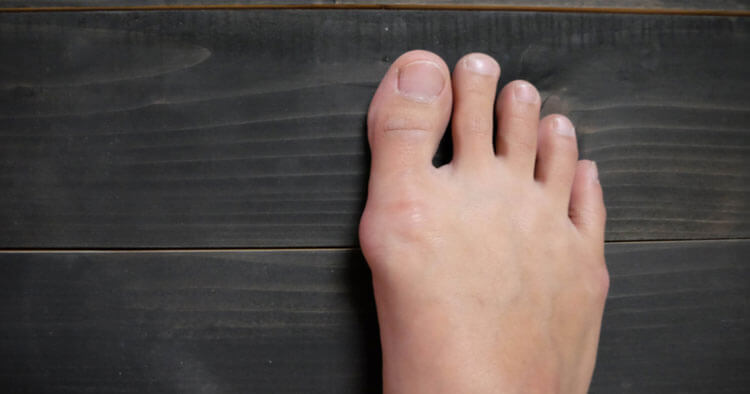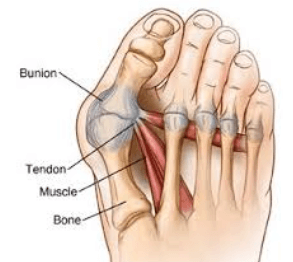Back and Joint Pain
Bunions: Those Bony Bumps At Your Big Toe
What Are Bunions?
Bunions, often referred to in medical practice as a hallux valgus where hallux is referencing the big toe and valgus the resulting angular change as seen in the image below. Hallux valgus is a deformity of the big toe characterized by the deviation of the big toe, where the big toe is rotated and drifts across towards the other smaller toes of the foot. This big toe drift results in the easily identifiable bony bump (bunion) on the inner side of the foot labeled in the image below.
As the bunion becomes more prominent, joint pain can develop and the skin over the bunion on the inner side of the foot can also become red and sore as it frictions against tight fitting footwear. Relatively smaller “bunions” referred to as bunionettes, can develop on the the other side of your foot occurring at the joint of the little toe (not pictured).
Features Of Bunions
Pain and cosmetic change in foot appearance are the most common complaints regarding bunions. Advanced bunions where there are significant and prolonged changes causing irritation to the overlying skin and subsequent changes around the bunion can occur causing further discomfort as well as adding additional negative cosmetic appearances to the bunion. Any pain experienced is often exacerbated with physical activity, however some people will experience pain and difficulty simply walking. Often wearing tighter shoes will aggravate symptoms and finding the right shoe to accommodate the hallux valgus can go a long way to making people feel more comfortable.
Classic signs and symptoms of bunions include:
- A visual bump on the inside base, of the big toe.
- Redness of the skin and/or swelling at the big toe joint.
- Pain at the joint of the big toe and the over lying skin.
- Corns and calluses may develop due to the drift of the big toe, which pushes into the smaller toes potentially causing toes to overlap and rub against each other.
- Restricted range of movement with both flexing and extending at the big toe.
- Difficulty finding shoes that fit properly, as a result of the bunion deformity changing the shape of the foot and the pain associated with pressure against the bunion itself.
Diagnosis Of Hallux Valgus
Often no treatment is required for bunions, however diagnosis and opinion regarding the best ongoing management for the relative stage of the condition can often improve comfort and help to prevent further progression of any deformity. Ideally a good starting point in bunion management is seeing a sports podiatrist, for most patients, bunions are diagnosed from a clinical assessment alone with out the need for any investigations. However, X-rays can be performed to determine the level of “change” to the joint, the alignment of the toes and extent of the deformity. In some situations this information can further assisting decision making on the best course of management, but as mentioned visiting a sports podiatrist is a fantastic starting point.
Disclaimer: Sydney Physio Clinic provides this information as an educational service and is not intended to serve as medical advice. Anyone seeking specific advice or assistance on Bunions: Those Bony Bumps At Your Big Toe should consult his or her physiotherapist, podiatrist or general practitioner.



